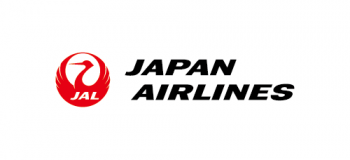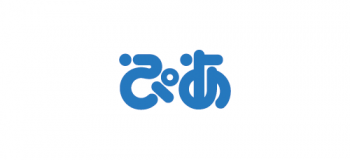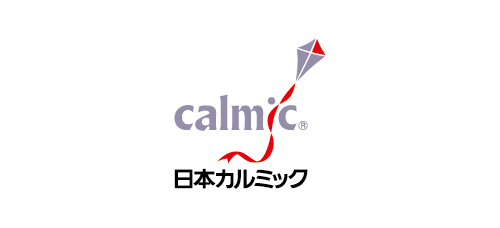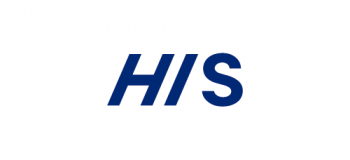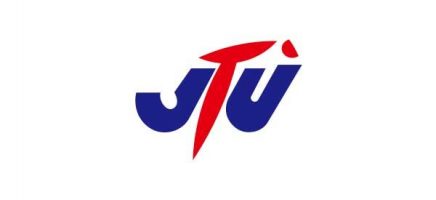ITU競技規則(パラトライアスロン簡易和訳
ITUルール第17章パラトライアスロン(※)部分の簡易和訳(第一次)を回覧します。アジアトライアスロン同盟(ASTC)技術委員でもある鈴木仁JTU審判委員の力作です。
現在、JTUメディカルアンチドーピング委員会ほかに確認願っているところですが、お気づきのことがあればご一報いただけるようお願いいたします。
※)http://www.triathlon.org/uploads/docs/itusport_competition-rules-2013_final.pdf
International Triathlon Union 国際トライアスロン連合(ITU)
17. PARATRIATHLON:パラトライアスロン
17.1. General:概要
a.) Paratriathlon, as per the ITU Constitution, is governed by the ITU Competition Rules.
This section contains the rules which affects only paratriathlon.
パラトライアスロンは、ITU憲章に定めるとおり、ITU競技ルールに則って運営される。本章はパラトライアスロンにだけに適用されるルールを記載する。
17.2. Paratriathlon Categories:
パラトライアスロンのカテゴリー
a.) ITU Paratriathlon Categories shall be established based on physical disabilities. Please refer to the ITU Paratriathlon Classification Rules and Regulations for eligible impairments. Medical evidence shall be required for classification.
ITUパラトライアスロン競技カテゴリーは身体障害に基づいて定められる。各障害の資格については、ITUパラトライアスロン資格分類ルールと規則を参照されたい。資格分類では医学的な証拠が求められる。
b.) The seven categories are as follows:
7つのカテゴリーは、下記の通りである。
(i)TRI 1 – Wheelchair user: Includes Paraplegic, Quadriplegic, Polio, Double Leg Amputee and disabilities that prevent the safe use of a conventional bicycle. Must use handcycle (as described in section 17.12)on bike course and racing wheelchair (as described in section 17.13)on the run;
TRI1 車椅子の利用者:半身不随、四肢麻痺、ポリオ、両脚切断者と、従来型の自転車を安全に利用できない障害を含む。バイクコースでは「ハンドサイクル」(17.12条に記載)、ランでは「競技用車椅子」(17.13条に記載)の利用が義務付けられる。
(ii) TRI 2 – Severe leg impairment,including above knee amputees. Must ride bicycle and run with above knee prosthesis or run using crutches; TRI 2 膝上切断を含む重度の脚の障害:自転車でバイク競技を行い、膝上の義足か杖を利用してラン競技を行わなければならない。
(iii) TRI 3 – Les Autres: Includes athletes with Multiple Sclerosis, Muscular Dystrophy, Cerebral Palsy, double leg amputee or paralysis in multiple limbs. Must ride a bicycle or tricycle and run. May use braces or prosthesis; TRI 3 その他の身体障害:多発性硬化症、筋ジストロフィー、脳性まひ、両脚切断や多発性の四肢の麻痺を含む。自転車かトライサイクルを使ってバイク競技を、通常にラン競技を行わなければならない。支持具や義肢を使ってもよい。
(iv)TRI 4 – Arm impairment: Includes paralysis, above elbow amputees and below elbow amputees, or impairment in both upper limbs. Must ride a bike. May use prosthesis, brace or sling on the bike and/or run; TRI 4 腕の障害:麻痺、肘上の切断と肘下の切断、両腕の障害を含む。バイク競技とラン競技の一方または両方で、義手、支持具や紐を使ってもよい。
(v) TRI 5 – Moderate leg impairment: Includes below-knee amputees. Must ride a bicycle and may run with prosthesis; TRI 5 中程度の脚の障害:膝下切断を含む。自転車でバイク競技を行わなければならず、ラン競技では義足を使ってもよい。
(vi)TRI 6a ? Total visual Impairment (IBSA/IPC B1): Includes athletes who are totally blind. No light perception in either eye, up to light perception but inability to recognise the shape of a hand at any distance or in any direction. One guide from same gender is mandatory throughout the race.
TRI6a 完全な視覚障害(IBSA/IPC B1):全盲の競技者。両目ともに光の知覚ができないか、光を知覚できても、どんな距離・方向からも手の形を認識することができない。同性のガイド1名がレース全体を通じて伴走しなければならない。
(vii)TRI6b Partial visual impairment(IBSA/IPC B2 and B3): Partially sighted athletes. Includes a visual acuity of less than 6/60 vision or visual field less than 40 degrees with best corrective vision. One guideof the same gender is mandatory throughout the race.
TRI6b 部分的な視覚障害(IBSA/IPC B2 and B3):部分的な視力を持つ競技者。最大補正後視力が6/60以下の視力か、40度以内の視野を持つ。同性のガイド1名がレース全体を通じて伴走しなければならない。
c.) All paratriathletes are allowed to compete in triathlon, duathlon and aquathlon events. Only paratriathletes from categories TRI2, TRI3, TRI4, TRI5, TRI6a and TRI6b are allowed to compete in winter triathlon, cross triathlon and cross duathlon events;
全てのパラトライアスロン競技者は、トライアスロン、デュアスロン、そしてアクアスロン大会で競技することが許される。TRI2、TRI3、TRI4、TRI5、TRI6a、そしてTRI6bカテゴリーのパラトライアスロン競技者のみ、ウィンタートライアスロン、クロストライアスロンそしてクロスデュアスロン大会で競技することが許される。
d.) In general, all the categories start together in a paratriathlon event. In case of an event with more than 100 entries, the TD should create two start waves in consultation with the LOC in which the athletes should be grouped together per category and per gender;
パラトライアスロン大会では、基本的に全てのカテゴリーは同時ににスタートする。100名以上の競技者が参加する場合、TDはLOCと協議の上、カテゴリーや性ごとのグループによる2つのスタート・ウェーブを設定する。
e.) In a Duathlon event, a paratriathlon race should be organized in two wave starts with a difference of at least one (1) minute. TRI1 athletes should start in the first wave and the rest of the athletes in the second wave;
デュアスロン大会においては、パラトライアスロン競技は2ウェーブ・スタートで実施するものとし、最低1分以上の間隔をあける。TRI1競技者は最初のウェーブでスタートし、残りの競技者が第2ウェーブでスタートする。
17.3. Classification:
資格分類(クラシフィケーション)
a.)Paratriathlon Classification Rules and Regulations can be found in Appendix G.
パラトライアスロン資格分類ルールと規則は別表Gに表示される。
b.) All Paratriathletes competing at an ITU sanctioned competition must have an international paratriathlon classification to ensure they meet the minimal eligibility criteria for competition and are assigned an appropriate profile and category. Paratriathletes requiring classification will need to:
ITUが管轄する大会で競技を行おうとする全てのパラトライアスロン競技者は、国際パラトライアスロン資格分類を受け、競技参加に関する最低限の資格基準を満たすという確認と、適切なカテゴリーへの分類を受けなければならない。
資格分類を受けようとするパラトライアスロン競技者は下記を求められる。
(i) be available to attend an International Classification appointment with an ITU designated Classification Panel prior to the competition;
競技に先立ち、ITUが指定した資格分類小委員会による国際資格分類へ出席できること。
(ii)provide, at time of classification, the “Certificate of Medical Diagnosis” or “Medical Diagnostic Form for Athletes with a Visual Impairment” signed by the appropriate medical personnel, a passport sized photo and any other relevant medical documentation.
資格分類の際、適切な医師の署名とパスポートサイズの写真、関係する医学的な書類が添付された「診断証書」か「視覚障害アスリート診断書」を提出すること。
c.)Paratriathletes competing at an ITU event, where classification is not available, will be informed through their National Federation to submit specific medical documentation to ITU, no later than 4 weeks before competition, so that a temporary classification can be assigned to them.
資格分類が実施できないITU大会に参加するパラトライアスロン競技者には、各国競技団体より、遅くとも競技の4週間前までに自身の医学的な書類をITUに送付し、それによって仮資格分類が行われる旨が通知される。
d) When an athlete category changes, a revision of the past results can be requested. ITU will study each request on a case to case basis and decide whether the relevant race results need to be modified.
競技者がカテゴリーを変更する場合、過去のリザルトの補正を求められることがある。ITUは事案毎に判断する前提で各々の依頼を調査し、該当する大会のリザルトを変更する必要があるかどうかを決定する。
17.4. Paratriathletes’ briefing:
パラトライアスロン競技者向け競技説明会
a.)A compulsory briefing of paratriathletes will be held before all ITU events and will be conducted by the ITU TD. Paratriathlon coaches may also attend the briefing.
全てのITU大会の前には、パラトライアスロン競技者が出席必須の会議が開催され、この会議はITU TDによって運営される。パラトライアスロンコーチも競技説明会に参加してもよい。
(i)Paratriathletes not attending the briefing without informing the TD of their absence, may be removed from the start list.
TDに連絡せずに競技説明会に欠席したパラトライアスロン競技者は、スタートリストから除外される。
(ii)Paratriathletes must notify registration official(s) of their presence upon entering the briefing room.
競技者は、競技説明会会場に入る際に、登録担当オフィシャルに出席の旨を知らせなければならない。
b.) All guides and handlers must be registered at the briefing.
全てのガイドとハンドラーは競技説明会の際に登録をしなければならない。
c.)All paratriathletes will pick up their own race packet following the briefing. The race packet will include:
全ての競技者は競技説明会の後、自身のレースパケットを受け取る。レースパケットには下記のものが含まれている。
(i)TRI1: red swim cap, 3 race number stickers for the helmet, 1 race number sticker for the handcycle, 1 race number sticker for the race wheelchair, 1 race number sticker for the daily wheelchair, 1 race bib number for the athlete and 2 race bib numbers for the handlers;
TRI1:赤のスイムキャップ、ヘルメット用のレースナンバーステッカー3枚、ハンドサイクル用のレースナンバーステッカー1枚、競技用車椅子用のレースナンバーステッカー1枚、日常用車椅子用のレースナンバーステッカー1枚、競技者用のレースナンバー1枚とハンドラー用のレースナンバー2枚。
(ii)TRI4: yellow swim cap, 3 race number stickers for the helmet, 1 race number sticker for the bike, 3 race number stickers for the prosthesis , 1 race bib number for the athlete and 1race bib number for the handler;
TRI4:黄色のスイムキャップ、ヘルメット用のレースナンバーステッカー3枚、自転車用のレースナンバーステッカー1枚、義肢用のレースナンバーステッカー3枚、競技者用のレースナンバー1枚とハンドラー用のレースナンバー1枚。
(iii)TRI2, TRI3 and TRI5; yellow or green swim cap, 3 race number stickers for the helmet, 1 race number sticker for the bike, 3 race number stickers for the prosthesis/aiding devices, 1 race bib number for the athlete and 1 race bib number for the handler;
TRI2、TRI3とTRI5:黄色か緑のスイムキャップ、ヘルメット用のレースナンバーステッカー3枚、自転車用のレースナンバーステッカー1枚、義肢/補助器具用のレースナンバーステッカー3枚、競技者用のレースナンバー1枚とハンドラー用のレースナンバー1枚。
(iv)TRI6a and TRI6b: 1green swim cap for the athlete and 1 white swim cap for the guide, 6 race number stickers for the helmets, 1 race number sticker for the bike, 1 race bib number for the athlete and 1 race bib number for the guide with the word “GUIDE” written on it.
TRI6aとTRI6b:競技者用の緑のスイムキャップとガイド用の白のスイムキャップを1枚、ヘルメット用のレースナンバーステッカー6枚、自転車用のレースナンバーステッカー1枚、競技者用のレースナンバー1枚とハンドラー用の「ガイド」の文字が印刷されたレースナンバー1枚。
17.5. Paratriathlon Handlers
パラトライアスロンハンドラー
a.) Securing qualified aides (handlers) shall be the responsibility of the paratriathlete, and all such handlers shall be identified to and receive credentials from the ITU technical officials at the Paratriathlon Briefing.
公認支援者(ハンドラー)を確保することはパラトライアスロン競技者の義務であり、全てのハンドラーはITU審判員によって確認され、パラトライアスロン競技説明会で確認証を受け取る。
b.) Handlers are to be allotted as follows:
ハンドラーは下記の通り割り当てられる。
(i) One (1) handler for categories TRI 2, TRI 3, TRI 4, and TRI 5;
TRI2、TRI3、TRI4、TRI5の各カテゴリーでは1名のハンドラー
(ii) Up to two (2) handlers for category TRI 1;
TRI1カテゴリーでは2名までのハンドラー
(iii) No handlers for categories TRI 6a and TRI 6b (Guides may act as the handler for this category).
TRI6aとTRI6bカテゴリーにはハンドラーは割り当てられない(このカテゴリーでは、ガイドがハンドラーを兼任する)
c.) Handlers are specifically allowed to assist paratriathletes by:
ハンドラーはパラトライアスロン競技者に対し下記の特定の支援が許される。
(i) Helping with prosthetic devices or other assistive devices;
義肢や他の補助具に関する支援
(ii) Lifting paratriathletes in and out of handcycles and wheelchairs;
競技者のハンドサイクルや車椅子への乗降の支援
(iii) Removing wetsuits or clothing;
ウェットスーツや衣類の脱衣
(iv) Repairing bikes and helping other equipment at the paratriathletes; transition zone area or at the official wheel station. TRI 6a and TRI 6b guides can help to repair the bike along the whole bike course, without receiving external help.
トランジションエリアや公式のホイールステーションでの、自転車の修理や他のパラトライアスロン競技者の競技用具の修理。ただしTRI6 aとTRI6bにおけるガイドは、バイクコースのどこでも修理の支援を行うことができるが、外部の支援を受けることはできない。
d.) All handlers shall be subject to the ITU Competition Rules in addition to further regulations deemed appropriate or necessary by the Race Referee.
全てのハンドラーはITU競技ルールと、審判長によって妥当または必要とみなされる追加の規則を遵守しなければならない。
e.) Any action taken by a handler, which propels the paratriathletes forward may result in a disqualification.
競技者を前進させるようなハンドラーの行動は失格の理由となる。
f.) One handler can assist a maximum of two athletes, provided that both athletes belong to the same category and gender.
1名のハンドラーは、同一カテゴリーで同性である最大2名の競技者を支援できる。
17.6. Paratriathlon Registration Process
パラトライアスロン競技者登録プロセス
a.) Briefing registration:
競技説明会での登録
(i) Paratriathletes have to sign the attendance list in order to enter the briefing room. At this stage, they must communicate to the registration officials whether they will have their own handler, or if they need an LOC handler;
パラトライアスロン競技者は、競技説明会の会場へ入場するために、出席の旨サインしなければならない。この段階で、登録担当オフィシャルにハンドラーを自己手配するか、それともLOCハンドラーが必要であるのかを伝える。
(ii) Paratriathletes must attend the briefing with their handler;
パラトライアスロン競技者は自己のハンドラーを競技説明会に出席させなければならない。
(iii) Immediately after the briefing, they will collect their race packet and their handler will collect the handlers’ t-shirt, as provided by the LOC.
競技説明会の直後に、競技者はレースパケットを受け取り、ハンドラーはLOCから提供されるハンドラーTシャツを受け取る。
b.) Paratriathletes’ lounge check in
パラトライアスリートラウンジチェックイン
(i) Paratriathletes and handlers must check in together;
パラトライアスロン競技者とハンドラーは一緒にチェックインしなければならない。
(ii) Handlers need to present themselves with the race bib number and the official handler’s t-shirt;
ハンドラーはレースナンバーと公式ハンドラーTシャツで自身がハンドラーであることを提示しなければならない。
(iii) If a paratriathletes is present without his/her handler/s, he/she has to wait until the handler/s arrive. If the paratriathletes wishes to register on his/her own, then the handler will not have access to the Field of Play;
パラトライアスロン競技者がハンドラーを同行していない場合、ハンドラーの到着を待たなければならない。パラトライアスロン競技者が代理で登録した場合、そのハンドラーは競技領域に入ることはできない。
(iv) Once a handler has been registered, they can only be replaced in exceptional circumstances and only by the TD.
いったんハンドラーとして登録されたら、例外的な状況である場合にTDによってしか、変更することはできない。
(v) Timing chips will be delivered during this process;
計測チップはこの段階で配布される。
(vi) Equipment (prosthesis, crutches, etc) for the pre-transition area (must have a race number on it) and will be checked at the paratriathletes’ lounge.
プレトランジションエリアに置く競技用具(義肢や杖など。レースナンバーを表示しなければならない)はパラトライアスリートラウンジでチェックされる。
17.7. Pre-Transition Area conduct:
プレトランジションエリア規範
a.) If a pre-Transition area exists, competitors in categories TRI1, TRI2, TRI3 and TRI5 may remove their wetsuits before accessing wheelchairs or collecting other ambulatory/prosthetic devices in this area. Only the TRI 1 handlers are allowed in this area.
プリトランジションエリアがある場合、TRI1、TRI2、TRI3、TRI5の競技者は車椅子ないし義肢を利用する前にこのエリアでウェットスーツを脱ぐ。TRI1ハンドラーだけがこのエリアに進入できる。
b.) Paratriathletes’ handlers racing in the TRI 1 category are allowed to assist their assigned paratriathlete in this area but can not propel nor push TRI1 paratriathletes forward.
TRI1カテゴリーで競技するパラトライアスロン競技者のハンドラーは、このエリアで担当するパラトライアスロン競技者の支援が許されるが、TRI1パラトライアスロン競技者を押すなどして前進させてはならない。
c.) The wheelchairs provided by the TRI 1 paratriathletes for this area must have functional brakes.
このエリアに置くTRI1パラトライアスロン競技者の車椅子は、ブレーキを備えていなければならない。
d.) The closest available area to the swim exit area will always be used to line up the TRI 1 wheelchairs, according to their race number.
スイム出口エリアから最も近い利用可能な場所に、レースナンバー順にTRI1の競技者の車椅子を並べる。
e.) There should be a dedicated space in the pre-transition area area, to set up and display all prosthetic devices/crutches for paratriathletes from categories TRI 2, TRI 3 and TRI 5 (if required). Two TOs will coordinate the distribution of these equipment devices to the athletes as they exit the water and receive notification of the race number from the TO situated at the water exit. All of the equipment will be lined up in numerical order.
プレトランジションエリアの中に、TRI2、TRI3そしてTRI5(必要に応じて)のカテゴリーの競技者が義肢や杖を準備しておくために、スペースを用意するべきである。2人のTOが調整し、これらの競技用具や器具を、水から上がってきた競技者に、水際にいるTOからレースナンバーに関する通知を受けながら配布する。全ての競技用具は番号順に並べられる。
17.8. Transition Area Conduct:
トランジションエリア規範
a.) No guide dogs will be allowed in the transition area at any time.
盲導犬をトランジションエリアへ入れてはならない。
b.) The LOC shall provide a minimum of 12 swim exit handlers at swim exit area, who will be responsible for assisting the paratriathletes from the swim exit to the pre- transition area. The final number of swim exit handlers shall be determined by the ITU Technical Delegate. Only these persons will be allowed to enter this area. Their training should be supervised by the ITU Technical Delegate.
LOCはスイム出口に最低12名のスイムイグジットハンドラーを用意しなければならない。スイムイグジットハンドラーは、パラトライアスロン競技者のスイム出口からプレトランジションエリアへの移動の支援に責任を持つ。スイムイグジットハンドラーの最終的な人数はITU技術代表が決定する。これらの人々だけがこのエリアに入ることができる。彼らの訓練はITU技術代表によって監督される。
c.) During the swim exit, the competitors will receive assistance from the swim exit handlers according to their swim cap colours, as follows:
スイム出口では、競技者は下記のスイムキャップの色に応じてスイムイグジットハンドラーの支援を受ける。
(i) Red: Paratriathlete needs to be lifted from the swim exit to the wetsuit removal area;
赤:競技者はスイム出口からプレトランジションエリアへ、持ち上げられて移動する必要がある。
(ii) Yellow: Paratriathlete needs to be supported to walk/run from the swim exit to the wetsuit removal area;
黄色:パラトライアスロン競技者はスイム出口からプレトランジションエリアへ歩いたり走ったりして移動する際、支援を受ける必要がある。
(iii) Green or white: Paratriathlete does not need any assistance at the swim exit.
White caps will be used for the guides.
緑か白:パラトライアスロン競技者はスイム出口で支援を受ける必要がない。白キャップはガイドが使用する。
d.)Swim exit handlers will assist the athletes to the best of their ability, in good faith and considering safety as the main principle.
スイムイグジットハンドラーは、能力の及ぶ限り、誠意をもって、安全を第一として競技者を支援する。
e.)Bicycles, tandems, handcycles or tricycles are not allowed from the swim exit to the transition area.
自転車、タンデムバイク、ハンドサイクルやトライサイクルを使ってスイム出口からトランジションエリアへ移動することは許可されない。
f.)All equipment shall remain within each paratriathlete’s assigned space in the transition zone. The only exception to this rule is when a “pre-transition area” exists. (This pre-transition area shall be set-up in coordination with the Technical Delegate).
全ての競技用具はトランジションエリア内で各競技者に割り当てられたスペースに置いておかなければならない。「プレトランジションエリア」が設けられている場合は例外である(このエリアは技術代表が調整し準備する)。
g.) Bike shoes must be left in the athlete assigned space in the transition area, before and after the bike segment.
バイクシューズは、バイク競技の前後には、トランジションエリアの競技者毎に指定された場所に置かなければならない。
h.) TRI6a and TRI6b positions in the transition zone must be the closest to the mount line (women and men), followed by the rest of the categories TRI 5, TRI 4, TRI 3, TRI 2, and TRI 1. TRI 1 paratriathletes are allowed to ride the handcycle inside the transition area.
トランジションエリアにおける全てのTRI6aとTRI6bの位置は乗車ラインから最も近いところに設定しなければならない(女子と男子)。残りのカテゴリーがそれに続き、TRI5、TRI4、TRI3、TRI2そしてTRI1の順となる。TRI1競技者はトランジションエリア内でハンドサイクルに乗ってよい。
17.9. Paratriathlon Swimming Conduct / Equipment:
パラトライアスロンスイム競技規範/競技用具
a.) For safety reasons, categories will be presented during theparatriathlete presentation at race startin the following order: TRI6b, TRI6a, TRI5, TRI4, TRI3, TRI2, TRI1. For safety reasons, TRI1 competitors should always enter the water after all other paratriathletes are in place.
安全上の理由で、スタートの際の競技者紹介は、次のカテゴリー順に実施される。TRI6b、TRI6a、TRI5、TRI4、TRI3、TRI2、TRI1。安全上の理由で、TRI1競技者は常に、他のすべてのカテゴリーが所定の位置についてから入水を行うべきである。
b.) The swim start shall be an “in-water” start.
スイム競技はフローティングスタート形式とする。
c.) If the swim portion consists of multiple laps, paratriathletes will not be required to exit the water between laps
スイムコースが複数周回ある場合、パラトライアスロン競技者は周回間に上陸しなくてもよい。
d.) Artificial propulsive devices including (but not limited to) fins, paddles, or floating devices of any kind are not allowed. All prosthetic and/or orthoses devices are considered propulsion devices. Use of any such devices will result in disqualification. Any objects, screws or prosthetic devices that may be potentially harmful can be banned by the ITU Technical Delegate prior to the competition.
フィンやパドル(ただし上記を全てとはしない)を含む、人工的な推進力を生む器具や浮力を生む器具はどんなものであれ許可されない。義肢や整形器具も推進力を生む器具とみなされる。それらの器具の利用は、失格の理由となる。スクリューや義肢などの他の競技者に危害を与えうるあらゆる物体はITU技術代表により競技前に禁止される。
e.) Wetsuit use is determined by the chart below:
ウェットスーツの利用可否は下記の表により決定される。(図解削除)
If any competitor has not completed the swim course within this time limit and is more than 100 metres short of the finish, they shall be removed immediately from the water.
競技者がこの時間内にスイムコースを終了することができず、フィニッシュまで100m以上の距離がある場合、競技者は速やかに上陸させられる。
f.) Wetsuits will not be permitted when the water temperature is 28o Celsius or above.
ウェットスーツは水温28℃以上の場合、許可されない。
g.) The swim portion may be cancelled if the official water temperature is lower than 15oC. (Official water temperature is calculated as indicated in the chart below)
公式水温が15℃を下回る場合、スイム競技は中止とする(公式水温は下表のように計算される)。
(i) The temperatures above are not always the water temperature used in the final decision. If the water temperature is lower than 22oC and the air temperature is lower than 16o, then the adjusted value is to decrease the measured water temperature according to the next chart.
上述の温度は最終決定の際に使われる水温として常に利用されるわけではない。水温22℃以下で気温16℃以下の場合、計測された水温は下記の表に従って調整される。(図解削除)
17.10. Paratriathlon Cycling Conduct / Equipment:
パラトライアスロン自転車規範/競技用具
a.) Paratriathlon competitions are non-drafting events.
パラトライアスロン競技ではドラフティングは禁止とする。
b.) In paratriathlon competitions, the term “bike” used herein shall include bicycles, tandems, tricycles or handcycles.
パラトライアスロン競技においては、「自転車」という用語は自転車、タンデムバイク、トライサイクル、ハンドサイクルを指して利用される。
c.) All bikes shall be propelled by human force. Arms or legs can be used to propel the cycle, but not both. Any violation shall result in disqualification.
全ての自転車は人力で前進させなければならない。腕や脚は自転車を前進させるために使用されるが、両方同時に利用することは許可されない。違反は失格の理由となる。
d.) Bike specifications for paratriathlon competitions are outlined in the ITU Competition Rules section 5.2.
パラトライアスロン競技のための自転車の仕様はITU競技ルール5.2に概要が示される。
e.) The specifications of a tricycle are as follows:
トライサイクルの仕様は下記の通りである。
(i) The tricycle is a vehicle with three (3) wheels of equal diameter. The front wheel, or wheels shall be steerable. The rear wheel(s) shall be driven through a system comprising of pedals and a chain;
トライサイクルは同径の三つの車輪を持つ車両である。前車輪(単数または複数)は操向可能でなければならない。後車輪(単数または複数)はペダルとチェーンで構成される装置で駆動されなければならない。
(ii) Recumbent tricycles are not allowed;
リカンベントトライサイクルは許可されない。
(iii) All tricycles shall conform to the International Cycling Union (UCI) construction and measurements for a bicycle, including the bottom bracket, seat tube and saddle position (excluding the rear triangle);
全てのトライサイクルは、国際自転車連合(UCI)の二輪自転車の構造および、ボトムブラケット、シートチューブおよびサドル位置の寸法に適合しなければならない(後ろ三角を除く)。
(iv) Wheels of the tricycle may vary in diameter between 70 cm maximum and 55 cm minimum including the tyre, using conventional cycle components. Modified hub attachments may be used if necessary. The width of tricycle double wheels may vary between 85 cm maximum and 60 cm minimum, measured at the centre of each tyre as it touches the ground;
トライサイクルの車輪は、タイヤを含み最大70cmから最小55cmの間の直径で、伝統的な自転車の部品を使用していなければならない。必要であれば改造したハブ取付け具を使用してもよい。トライサイクルの2車輪間の幅は、タイヤ接地面の中心間で計測して最大85cm、最小60cmの寸法とする。
(v) If a tricycle’s two-wheel rear axle does not have a differential, only one wheel must be driven, due to the different speeds of the wheels in turns;
後輪が2車輪のトライサイクルで、後車軸に差動装置を持たない場合、カーブでの車輪間の速度差を考慮し、1車輪のみの駆動としなければならない。
(vi) A tricycle shall not measure more than 200 cm in length and 95 cm in width overall;
トライサイクルは、全長200cm、全幅95cmを超えてはならない。
(vii) The tricycle’s top tube may slope down rearwards, to an inclination parallel with the down tube to facilitate easy mounting by the rider;
競技者が容易に乗車できるように、トライサイクルのトップチューブをダウンチューブに平行になるまでを限度として傾斜させてよい。
(viii) The two wheels of a tricycle may be offset by a maximum of 10 cm either side of a centreline, which passes through the single wheel and the frame top tube;
トライサイクルの2車輪は、1輪およびトップチューブを通る中心線のいずれかの側に最大限10cmオフセットしてもよい。
(ix) A tricycle shall be fitted with a safety bar to prevent the front wheel of a following tricycle from entering the space between the rear wheels. The safety bar must be fixed to the tricycle so that there is no risk of the bar moving during competition. The distance from the ground to the centre of the safety bar should be the same as the distance between the ground and the middle of the hub when the tyres are inflated to the pressure used in competition.
トライサイクルは、後続のトライサイクルの前輪が後車輪の間の空間に入り込むことを防ぐために安全バーを取り付けなければならない。安全バーは、競技中に動く危険がないようにトライサイクルに強固に固定しなければならない。地面から安全バーまでの距離は、地面と、競技のための空気圧のタイヤをつけた車輪のハブ中心との距離と等しいものとする。
f.) Protective shields, fairings or other devices, which have the effect of reducing resistance, are not allowed.
抵抗を減らす効果を持つ防護シールド、フェアリングやほかの器具は許可されない。
g.) Artificial handgrips and prosthetics are allowed but may not be fixed to the bike. Rigid prosthetic adaptations that are mounted or fixed to any part of the bike are not allowed.
人工のハンドグリップや義肢は許可されるが、自転車に固定してはならない。自転車に取り付けられた、義肢を固定する接続具の利用は許可されない。
h.) Except for handcycles (TRI 1), a rider’s position shall be supported solely by the pedals, the saddle and the handlebars.
ハンドサイクル(TRI 1)を除き、競技者はペダル、サドル、ハンドルバーにのみによって支えられていなければならない。
i.) Paratriathletes in the TRI 2 category not wearing a prosthesis may use a support for the thigh only if there is no fixation of the thigh to the bicycle. (For example, the support may be a half tube attached to the cycle, with a closed base and maximum of 10 cm closed side at the base, but no “thigh fixing devices” are allowed).
義足を装着していないTRI 2カテゴリーのライダーは、大腿のみを支える補装具を使用できるが、大腿部を自転車に固定することはできない。(補装具は自転車に付けられた、閉じられた基部と基部において最大10cm側面からなる半円筒形であるが、大腿を固定する器具の使用は許されない。)
j.) Bikes must have two independent braking systems.
自転車は二系統の独立したブレーキ装置を備えていなければならない。
k.) Handcycles and tricycles must have two braking systems, one at the front and one at the back. The braking system on the double wheels must be dynamic and act onboth wheels.
ハンドサイクルとトライサイクルは、1系統は前輪、1系統は後輪の2系統のブレーキ装置を備えていなければならない。2輪用のブレーキ装置は動的かつ両方のホイールに動作しなければならない。
l.) All requests for impairment adaptations to any bike or handcycle must be submitted by the corresponding National Federation in writing for ITU approval at least one (1) month before the event in which the athlete wishes to compete in, with a clear explanation and a minimumof 5 pictures using the form named “Equipment Adaptation Form” posted under: http://www.triathlon.org/about/downloads_category/paratriathlon
The solicitant will be informed by the ITU on the outcome of the request once the panel has reviewed the information. If accepted, the information will be incorporated to the “Approved Paratriathlon Impairment Adaptations on Bicycles” file under the same location.
身体障害対応のための自転車やハンドサイクルへの改造に関して、少なくとも参加を希望する大会の1か月前に、明快な説明と最低5枚の写真を添え、下記ウェブサイトに掲載されている「装備改造に関する申請書」と題された書式を利用し、文書で、担当する当該国競技団体を通じてITUに承認を依頼しなければならない。
http://www.triathlon.org/about/downloads_category/paratriathlon
パネルによる評価後、ITUより申請者へ評価結果が伝えられる。承認されると、その情報は「承認済みの身体障害対応のための自転車への改造」ファイルとして、上述の場所に格納される。
m.) The ITU technical officials shall not be liable for any consequences deriving from the choice of equipment and/or any adaptations used by paratriathlete, nor for any defects it may have, or its non-compliance.
ITU審判員はパラトライアスロン競技者による競技用具の選択や改造、それらに内包される瑕疵、法令の非遵守がもたらすいかなる結果に対しても責任を負わない。
n.) No guide dogs will be allowed on the bike course at any time.
盲導犬をバイクコースへ入れてはならない。
o.) No bike course shall have a maximum gradient of over 12% at the steepest section.
バイクコースは最も急勾配の場所でも最大12%未満の勾配としなければならない。
p.) The use of the bib number is mandatory and must be visible from the back.
レースナンバーの使用は必須で、後ろから見えるようにしなければならない。
17.11.Paratriathlon TRI 1 Swimming Conduct/Equipment
パラトライアスロンTRI1スイム規範/装備
a.) Athlete may only use one binding around the legs in any in position. The binding will be 10cm in width as a maximum.
競技者は両脚を結わえる紐を一本のみ使用し、脚のどの部分を結わえてもよい。紐の幅は最大10以内とする。
b.) The use of wetsuit bottoms is always permitted.
ウェットスーツのズボン部分の利用は、常に許可される。
17.12. Paratriathlon TRI 1 Cycling Conduct:
パラトライアスロンTRI1自転車規範
a.) Paratriathletes must use an arm powered (AP) handcycle in a recumbent position.
パラトライアスロン競技者は、腕の力(AP)で推進するハンドサイクルを、リカンベントポジションで利用しなければならない。
b.) Specifications of a recumbent position handcycle are as follows:
リカンベントポジションハンドサイクルの仕様は下記の通りである。
(i) A handcycle shall be an arm powered, three-wheeled vehicle with an open frame of tubular construction, which conforms to the general principles of the International Cycling Union’s (UCI) construction for bicycles (except that the chassis frame tubes need not be straight). For the seat or backrest construction, the maximum frame tube diameter may not exceed the maximum defined by the general principles of UCI;
ハンドサイクルは「腕力による」三輪車で、国際自転車連合(UCI)の自転車構造の一般原則に適合する、パイプで構成された開放フレームを持っていなければならない(車台フレームチューブが直線状でなくてもよいことを除く)。座席または背もたれのフレームチューブは、UCIの一般原則に定める最大値を超えてはならない。
(ii) The single wheel may be of a different diameter to the double wheels. The front wheel or wheels shall be steerable; the single wheel, either front or rear, shall be driven through a system comprising handgrips and a chain. The handcycle shall be propelled solely through a chainset and conventional cycle drive train, of crank arms, chainwheels, chain and gears, with handgrips replacing foot pedals. It shall be propelled by the hands, arms and upper body only;
一輪は他の同軸輪と直径が異なっていてもよい。前車輪(一輪または二輪)は操向可能で、前車輪または後車輪の一輪はハンドグリップとチェーンで構成された機構で駆動され
なければならない。ハンドサイクルは、ペダルに替えてハンドグリップをつけたクランクアーム、チェーンホイール、チェーンおよびスプロケットによるチェーンと従来型の自転車推進機構によってのみ推進されなければならない。手、腕および上体を主として前進させられなければならない。
(iii) The paratriathlete must have clear vision. As such, the horizontal of the paratriathlete’s eye line must be above the crank housing/crank set, when (s)he is sitting with his/her hands on the handlebars facing forward at full extent, the tip of his/her shoulder blades in contact with the backrest and his/her head in contact with the headrest, when applicable. From this position, conforming measurements are calculated as follows: (#1) The distance from the ground to the centre of the paratriathlete’s eyes and (#2) the distance from the ground to the centre of the crank housing (crank set). Measurement #1) must be equal or greater than measurement #2 All handcycles must have a mirror fixed either to the helmet of the rider or at some point on the front of the bike to ensure rear- view vision is possible;
競技者が明瞭な視界を確保しなければならない。水平視線は、競技者が正対するハンドルバーを最大限伸ばした上に手を置き、背もたれに肩甲骨の先が接し、もしあればヘッドレストに頭が接した状態で着座した時に、クランクハウジング/クランクセットの上方になければならない。
このポジションでの着座姿勢について、下記の計算に基づいて適切な測定値が求められる。(#1)地面から競技者の眼の高さまでの距離と、(#2)地面からクランクハウジング(クランクセット)の中心までの距離。計測#1(眼の高さから地面まで)は計測#2(クランクハウジングから地面まで)と同等か、それより大きくなければならない。全てのハンドサイクルは、後方視界を得るために競技者のヘルメットあるいは自転車の前方箇所に鏡をつけなければならない。
(iv) The athlete must have the feet positioned in front of the knees during the bike segment
競技者はバイク競技の間、足先を膝の前に位置させておかなければならない。
(v)Adjustments to handcycle may not be made during the race;
ハンドサイクルの調整を競技中に行ってはならない。
(vi)Wheels of the handcycle may vary in diameter between a 406 mm minimum and a 622 mm maximum. Modified hub attachments may be used if necessary. The width of handcycle double wheels may vary between 55 cm minimum and 70 cm maximum, measured at the centre of each tyre where the tyres touch the ground;
ハンドサイクルの車輪は、最小径406mm、最大径622mmとする。必要であれば、改造されたハブ取り付け具は使用できる。ハンドサイクルの同軸車輪間隔は、接地点におけるタイヤ中央間の距離において、最小55、最大70とする。
(vii)Disk wheels are not permitted for handcycles;
ハンドサイクルのディスクホイールは許可されない。
(viii)A handcycle shall not measure more than 250 cm in length or 70 cm in width;
ハンドサイクルの大きさは、長さ250、幅70を超えてはならない。
(ix)The shifting device can either be within the extremities of the handlebars, or on the side of the paratriathlete’s body;
変速機器はハンドルバー先端か、競技者の体側につけられる。
(x)The largest chain ring shall have a guard securely fitted to protect the paratriathlete.This protection shall be made of solid material that is sufficiently robust and covers the chain ring fully over half of its circumference (180°) on the side facing the rider;
最大のチェーンリングには競技者を保護するための安全ガードをつけなければならない。この保護具は十分に堅固な材料で作られ、チェーンリングの競技者に面する半円周(180°)を完全に覆わなければならない。
(xi)Maximum frame tube diameter shall be 80 mm, irrespective of tube material, or profile. Any fillets, or ribs, inserted at joints between tubes, shall be for strengthening purposes only. Non-functional, aerodynamic devices are not permitted for competition;
フレームチューブの最大寸法は、材料、形状に関わりなく80mmとする。チューブの接合部につけられるひれ状、脈状のものは、強度向上のためのもののみとする。機能のない、空力的装置は競技には許可されない。
(xii)A quick release body harness is permitted;
クイックリリースのボディハーネスは使用してもよい。
(xiii)It is mandatory that a handcycle with two rear wheels should be fitted with a safety bar to prevent the front wheel of a following handcycle from entering the space between the rear wheels. A safety bar must not exceed the width of each rear wheel tyre and all tube ends must be closed or plugged. The safety bar must be fitted 15 mm ( + / – 2 mm) behind the wheels. It must be around tube (at least 18 mm in diameter) and made of adequately solid material to resist impact without bending or breaking. The distance between the ground and the bar axis must be 280 mm (+/- 10 mm). The structure and assembly of the safety bar must guarantee that normal bumps, which may be experienced during a race, don’t affect the safe functioning of the bar (see diagram).
2つの後輪を備えるハンドサイクルは、後ろを走るハンドサイクルの前輪が後輪の車輪間のスペースに侵入してくるのを防ぐために、セーフティバーを装備しなければならない。セーフティバーは両輪の間隔を上回る長さにしてはならず、チューブの両端は閉じるか栓をしておかなければならない。セーフティバーはホイールの15mm(+/- 2mm)後ろに固定しなければならない。それはチューブ形状(最低直径18mm)で、衝撃を受けても曲がったり壊れたりしないよう十分に堅牢な素材で作られていなければならない。地表からバーの軸までの距離は280mm(+/-10mm)でなければならない。セーフティバーの構造や組立は、競技で経験するような通常の凹凸程度ではバーの安全機能に影響を及ぼさないことが、保証されていなければならない(図参照)。
c.)The bib number will be placed at the back of the handcycle and will be visible from the back.
レースナンバーは、後ろから見えるようにハンドサイクルの背面に表示しなければならない。
d.) Athletes must stop completely at the dismount line. Once stopped, the athlete can continue with the race.
競技者は、降車ラインで完全に停止しなければならない。停車後、競技者は競技を再開できる。
17.13.Paratriathlon TRI 1 Running Conduct/ Equipment:
パラトライアスロンTRI1ラン競技規範/競技用具
a.) TRI 1 competitors perform the run portion in a “racing wheelchair” and are governed by all ITU Competition Rules with regards to safety.
TRI 1競技者はラン競技では「競技用車椅子」を使用し、安全に配慮した上で全てのITU競技ルールに従わなければならない。
b.) The specifications of a “racing wheelchair” (hereafter referred to as “the chair”) are as follows:
「競技用車椅子」(以降「車椅子」と記載する)の仕様は下記の通りである。
(i) The chair shall have two large wheels and one small wheel;
車椅子は2つの大きな車輪と1つの小さな車輪を備えていなければならない。
(ii) No part of the body of the chair may extend forwards beyond the hub of the front wheel and be wider than the inside of the hubs of the two rear wheels. The maximum height from the ground of the main body of the chair shall be 50 cm;
車椅子本体のどの部分も、フロントホイールのハブより前に出ていてはならず、2つの後車輪のハブの内側間の幅より広くあってはならない。地面から車椅子本体の高さは最大50とする。
(iii) The maximum diameter of the large wheel, including the inflated tyre, shall not exceed 70 cm. The maximum diameter of the small wheel, including the inflated tyre, shall not exceed 50 cm;
大きい方の車輪の最大径は、空気を入れた状態のタイヤを含み70を超えないものとする。小さい方の車輪の最大径は、空気を入れた状態のタイヤを含み50を超えないものとする。
(iv) Only one plain, round, hand rim is allowed for each large wheel. No mechanical gears or levers that propel the chair shall be allowed;
それぞれの大きい方の車輪について、1つずつの簡素な円状のハンドリムが許可される。車椅子を前進させるどんな機械的な道具やレバーも許可されない。
(v) Only hand operated, mechanical steering devices will be allowed;
手で操作される、機械式の操向具だけが許可される。
(vi) Competitors must be able to turn the front wheel manually to the left and right;
競技者は、フロントホイールを手で左にも右にも旋回できなければならない。
(vii) No part of the chair may protrude behind the vertical plane of the back edge of the rear tyres;
車椅子のどの部分も、リアタイヤ後端の垂直面から突き出していてはならない。
(viii) It will be the paratriathlete’s responsibility to ensure the wheelchair conforms to all the above rules and no event shall be delayed while adjustments are made to the chair;
上記の全てのルールに車椅子を適合させることは競技者の義務であり、車椅子の調整のために大会を遅延させることはない。
(ix) Paratriathlete must ensure no part of their lower limbs can fall to the ground during the event;
競技者は、大会の間中、下肢が地面に落ちないようにしなければならない。
(x) Paratriathlete shall wear an approved bike helmet at all times while seated in the chair.
競技者は、車椅子に着座している間は常に、認可された自転車用ヘルメットを被っていなければならない。
c.)Propulsion by any other method except the paratriathlete pushing on the wheels or push-rims will result disqualification. A paratriathlete attempting to overtake another paratriathlete carries the responsibility of ensuring full clearance of the chair being overtaken before cutting across. The paratriathlete being overtaken has the responsibility not to obstruct or impede the passing paratriathlete once the front wheel(s) of the passing chair are in sight.
パラトライアスロン競技者によるホイールないしはリムを押す以外の方法による推進力の利用は失格の理由となる。他の競技者の追い越しを試みるパラトライアスロン競技者には、横切る前に、追い抜かれる車椅子全体の空間を確保する義務がある。追い抜かれているパラトライアスロン競技者には追い抜いて行く車椅子のフロントホイールが視野に入ったら追い抜いて行く競技者を妨げたり遅らせたりしないという義務がある。
d.)TRI 1 athletes will be judged as finished, the moment any part of the torso, reaches the perpendicular line extending from the leading edge of the finish line.
TRI1競技者は、胴体のどこかの部分がフィニッシュラインの最先端から伸ばされた垂線に達した瞬間に、フィニッシュしたと判定される。
e.) The bib number will be placed at the back of the wheelchair and visible from the back
レースナンバーは、後ろから見えるように車椅子の背面に表示しなければならない。
17.14.Paratriathlon TRI 2 to TRI 5 Running Conduct / Equipment:
パラトライアスロンTRI2からTRI6ラン競技規範/競技用具
a.) Competitors may use prosthetics, canes or crutches to ambulate the course.
競技者は義足、杖、松葉づえを使ってコースを移動することができる。
b.) The only acceptable footwear on the run course (aside from prosthetics) are running shoes.
ランコース上で許可される唯一の履物(義足を除く)はランシューズのみである。
c.) No guide dogs are allowed on the run course at any time.
盲導犬をランコースへ入れてはならない。
d.) Athletes will wear a bib number, which will be visible from the front.
競技者は、前面から見えるようにレースナンバーを身に着けなければならない。
17.15. Paratriathlon TRI 6a and TRI 6b Conduct:
パラトライアスロンTRI6aとTRI6b規範
The following additional rules apply to all visually impaired (TRI6a and TRI6b) competitors and their guides:
以下の追加ルールが全ての視覚障害(TRI6aとTRI6b)競技者とガイドに適用される。
a.) General:
概要
(i) Each athlete must have a guide of the same gender. Both athlete and guide will hold a license from the same National Federation.
各々の競技者は同性のガイドをつけなければならない。競技者とガイドの両方が、同じ国の競技団体から発行されるライセンスを保有する。
(ii) Each athlete is allowed a maximum of one (1) guide during each race.
それぞれの競技者はそれぞれの競技で最大で1人のガイドをつけることが許される。
(iii) An athlete must respect a waiting period of twelve (12) months after his/her last elite ITU event before competing as a guide.
エリート競技者がガイドとなる際には、エリートITU大会への最後の出場から12ヶ月の待機期間を持たなければならない。
(iv)All guides must comply with minimum age requirements as per the ITU Competition Rules Appendix A.
ガイドはITU競技ルール別表Aに定める最低年齢規定に従わなければならない。
(v)In the event of an injury or illness, and upon presentation of a medical certificate, a guide may be replaced up to 24 hours before the official start of the competition. No changes will be allowed after this deadline.
ガイドの交代は、怪我や病気の場合、医師の診断書の提出を条件として、公式な競技開始時刻の24時間前までであれば可能である。この期限後は、交代は許可されない。
(vi)Guides are not allowed to pull or push the athletes.
ガイドは競技者を引いたり押したりしてはならない。
(vii)Athlete and guide shall not be more than 0.5 meters apart at all times.
いかなる時も競技者とガイドは0.5m以上離れてはならない。
(viii)Guides may not use paddleboards, kayaks, etc. (on the swim portion) or bicycles, motor bicycles, etc., (on the run portion) or any other mechanical means of transport.
ガイドによる、パドルボード、カヤック、その他(スイム競技中)、自転車、オートバイ(ラン競技中)、またはその他の機械を利用した移動手段は許可されない。
b.) Swimming conduct:
スイム規範
(i)Each athlete must be tethered to their own guide during the swim. The guide should swim next to the athlete within a maximum separation distance of 0.5m.
各々の競技者はスイム競技中、自身のガイドと紐でつながれていなければならない。ガイドは競技者の隣、最大0.5m以内の距離で泳がなければならない。
(ii)The tether should be elastic rope with bright or reflective color and 0,5 m long.
It can be fixed at any point of the athletes’ body.
紐は伸縮性があり、光沢か反射性のある色で、0.5mの長さとする。競技者の身体のどの部分で固定しても良い。
(iii)This rule will be in effect from the 2013 London Paratriathlon World Championships.
このルールは2013年ロンドンパラトライアスロン世界選手権から有効となる。
c.)Cycling conduct:
バイク規範
(i)All competitors and guides must use a tandem bicycle. The specifications of the tandem bicycle are as follows:
全ての競技者とガイドはタンデムバイクを利用しなければならない。タンデムバイクの仕様は下記の通りである。
?A tandem is a vehicle for two riders, with two wheels of equal diameter, which conforms to the general principles of UCI construction for bicycles. The front wheel shall be steerable by the front rider, known as the pilot. Both riders shall face forward in the traditional cycling position and the rear wheel shall be driven by both cyclists through a system comprising pedals and chains; the maximum sizes will be 2.70 meters long and 0.5 meters wide.
タンデムは2人の競技者のための、UCIの自転車構造の一般原則に適合した、同径の2つの車輪を持つ車両である。前車輪はパイロットとして知られる前方の競技者により操向可能でなければならない。両競技者は伝統的な自転車の姿勢で前を向き、後輪はペダルとチェーンで構成される機構で両競技者により駆動されなければならない。大きさは最大で、2.7mの長さで0.5mの幅とする。
?The tandem top tube, and any additional strengthening tubes, may slope to suit the morphological sizes of the riders.
タンデムのトップチューブおよび追加の補強チューブは、競技者の身体的寸法応じて傾斜してよい。
d.)Running conduct:
ラン規範
(i)Each athlete must be tethered during the run with his/her guide. They may receive verbal instructions only from their guide.
各々の競技者はラン競技中、自身のガイドと紐でつながれていなければならない。競技者は自身のガイドからのみ口頭での指示を受けられる。
(ii)At no time may a guide lead or pace the competitor nor propel them forward by pulling or pushing. As the athlete crosses the finish line, the guide must be beside or behind the competitor but not further apart than the required 0.5 meters maximum separation distance. They are excluded, for safety reasons the 10 metres before and after an aid station, an acurte turn, Penalty box, transition area or any other section of the run course determined by the TD.
ガイドは競技者をリードしたり、ペースを作ったり、引いたり押したりして競技者を前進させたりしてはならない。競技者がフィニッシュラインを通過する際、ガイドは競技者の横あるいは後ろにいなければならないが、所定の最大距離である0.5m以上離れてはいけない。安全上の理由で、エイドステーション、鋭角のターン、ペナルティボックス、トランジションエリアやTDによって定められるランコース上の他の場所の前後10mでは、このルールは適用外とする。
(iii)The athlete may use an elbow lead during the run. In addition, the athlete may receive verbal instruction from the Guide
競技者は、ガイドの肘をつかんでラン競技を行ってよい。加えて、競技者はガイドから口頭の指示を受けてよい。
17.16.Hygiene
衛生
a.) It is mandatory for all paratriathlon competitors, who use catheters or other urinary diversion devices, to prevent spillage by using a catheter bag at all times. This includes during training, competition and classification.
カテーテル及び尿路変更機器具を利用する全てのパラトライアスロン競技者は、常にカテーテルバッグを利用し、流出を防止しなければならない。これはトレーニング、競技、資格分類の期間を適用される。
- このニュースは表記の日時現在のものであり、追加変更の可能性があります。
- ニュースの全文または一部の文章をホームページ、メーリングリスト、ニュースグループまたは他のメディア等へ転載する場合は、出典・日時などを明記してください。





